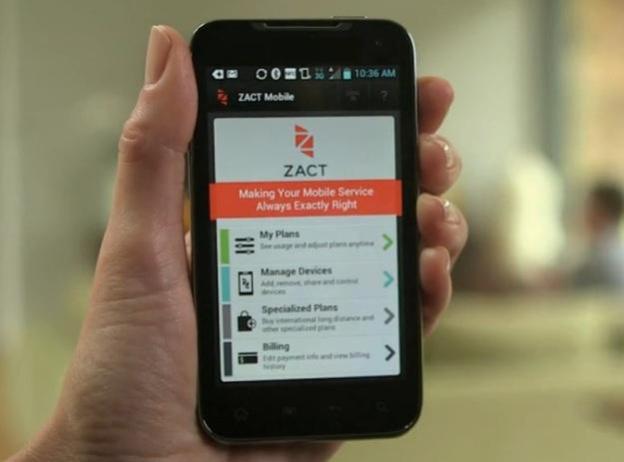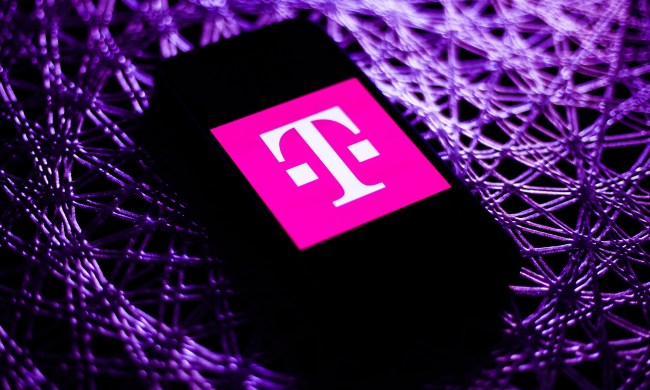
We recently posted an article on why America’s wireless carriers are so terrible. And it all comes down to one major problem: price. Here in the United States we pay a whole lot of money for cell phone service and don’t get commensurate value for that cost. In other words, we’re being ripped off. Even with T-Mobile’s new “uncarrier” strategy you still have to pay $70 for unlimited everything if all you want is unlimited data. Wouldn’t it be awesome if you could buy everything ala carte for a low price? That’s the basic idea behind a new wireless service called Zact, launching nationwide today.
Zact gives you more granular control over how much they pay for voice, text, and data both when you first set up the service and during the billing period. It’s possible to start out with service that costs under $4 per month on a smartphone with no contract, no subsidized pricing (you have to pay full price for your phone), and no credit check. It’s similar to Ting, another small mobile virtual network operator (MVNO) that launched last year. Both carriers piggyback on Sprint’s network and only work on a select number of Android phones. Zact offers a few extra features Ting doesn’t, including more detailed control over price and services.

The company’s goal is to take the fear out of making the jump from feature phones to smartphones. The majority of carriers now force smartphone owners to add a data plan. With Zact, you can customize a plan to your needs; minimal minutes, lots of texts, no data, lots of data, whatever. If you get too close to your limit, Zact will warn you (even while in a call) and give you an opportunity to add more in small increments.

Using a tool on the smartphone itself, you (the customer) can adjust voice, data, and texts individually while also keeping track of how much you’ve already used. You can use the money you’ve paid in any way, so if you discover mid-month you need more data than minutes, you can adjust them both and not necessarily pay any extra. If you don’t use every minute, text, or megabyte you paid for, the company will automatically credit you on the next month’s bill. The minutes or data don’t roll over, but the actual money does.
It’s great that you can keep tabs on how much you’ve used during the month and adjust it. We always hear that the “average” smartphone owners only use about 500MB of data a month, but what if you’re not average? Or below average? Or free Wi-Fi is so abundant where you live that you don’t need data? The plans might get expensive for heavy data users (2GB costs just under $45) but if you don’t make many calls you can dial that down to almost nothing. Customers who use a free texting solution don’t need traditional SMS. Whatever your usage pattern or needs, Zact promises you will only have to pay for what you need.

In addition to blanket data allotments, customer will be able to purchase access to specific apps for even lower prices. Get access to Twitter or Facebook for just a day, skip everything but email access, or buy a few hours of browsing for less than $3. What makes this and the shifting voice, text, and data allotments possible is cloud-based technology on the backend. The best part is if you choose email or browser-only access, you aren’t restricted to just one app. As long as it’s listed on the app store (and thus Zact’s database), any app will work.
Any Zact plan is sharable among multiple devices, and customers won’t have to pay extra for services no matter how many phones they connect. The fine grain level of customization applies to groups as well. Mom and dad can set limits on how much kids can talk, text, or use the Internet and also limit when kids can use the phone, who they can call, and what apps they have access to at specific times. Any Zact phone can hop on or off a plan, so if roommates or couples sharing a plan part ways or a kid grows up and goes off to college, they can keep their phone and just start their own account.

Setting up an account is easy on Zact.com. New customers will not need to go through a credit check; all you need is a credit or debit card. The up-front payment model is similar to existing pre-paid carriers except that you can adjust how much you want to pay every month based on your usage. Similar to pre-paid carriers, Zact utilizes existing carrier infrastructure instead of building their own. Currently, the company has a partnership with Sprint and the first two phones will operate wherever that carrier offers service. Not just 3G, but 4G LTE as well (where available). Partnerships with other carriers are in the works and Zact promises more announcements on that front soon.
Zact’s initial Android smartphone offerings are available for pre-order today: the $400 LG Viper 4G LTE and the $200 LG Optimus Elite will start shipping in June. Again, these are not subsidized, so there are no extra monthly payments involved.
Greg Raleigh, CEO of Zact’s parent company ItsOn, said that in addition to more carrier partnerships, more devices are coming as well. This launch is just the first baby step, and the company is expected to grow quickly over the next few years. By the end of the summer there will be more smartphones and even some tablets on the service. He also said that, down the line, customers will likely be able to bring their own devices to the service instead of having to purchase one from Zact – this is currently available on Ting, but wasn’t at launch – but gave no firm timeline.
Zact isn’t the cure-all for American carrier ills and isn’t a good fit for every smartphone user, but it is a great idea that has the potential to make smartphones affordable to a hugely underserved customer base just on the wrong side of the digital divide. We look forward to trying out in the next few weeks and comparing it to Ting and maybe Republic Wireless. To explore all of the services and pricing available, visit Zact.com.


